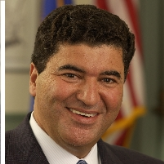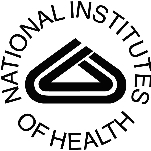The National Institutes of Health (NIH) produce some of the most important medical and scientific research in the United States. Operating under the Department of Health and Human Services, NIH is responsible for the creation of a vast range of medical research. Eighty three percent of NIH’s funding is distributed to scientists, medical researchers and university professors both in the US and abroad. NIH also conducts its own research at its 27 institutes and centers. Some of NIH’s researchers have been criticized for accepting money from pharmaceutical companies, while its leader has publicly criticized the policies of President George W. Bush.
(est. in 1953) is the clinical research facility of the National Institutes of Health. It provides the patient care, services and environment needed to initiate and support training in clinical research.
- All Organizations (Excel - 17 MB)
- Domestic Higher Education Only (Excel - 13 MB)
- Independent Hospitals Only (Excel - 1.15 MB)
- Medical Schools Only (Excel - 11 MB)
- Research Institutions Only (Excel - 1.11 MB)
- Non Profits Only (Excel - 346 KB)
|
SAIC, Inc.
|
$2,694,317,798
|
|
Westat, Inc
|
$769,745,370
|
|
University of California
|
$469,149,110
|
|
Lockheed Martin
|
$424,476,660
|
|
SRA International
|
$400,070,633
|
|
INEI Corp
|
$394,695,000
|
|
BearingPoint, Inc.
|
$379,971,872
|
|
Pharmaceutical Product Development, Inc.
|
$373,147,324
|
|
Battelle Memorial Institute Inc
|
$317,856,481
|
|
Higgins Development Partners
|
$293,412,794
|
Three Researchers in NIH Controversy Are Leaving
(by David Willman, Los Angeles Times)
- Table of Contents
- Overview
- History
- What it Does
- Where Does the Money Go
- Controversies
- Suggested Reforms
- Comments
- Leave a comment

Francis S. Collins brings one of the more eclectic, and highly regarded, profiles to the Obama administration as director of the National Institutes of Health (NIH). A leading figure in the completion of the Human Genome Project, which is considered one of the most important scientific accomplishments of our time, Collins brings a wealth of scientific credentials to the post. He also possesses a religious perspective that has rubbed some of his counterparts the wrong way, along with a deep love for motorcycles and rock music. He was confirmed by the Senate August 7, 2009.


- Latest News
- D.C. Public Schools will Teach all Second-Graders to Ride a Bike
- New Rule in Germany Limits Sales of Sex-Themed E-Books to 10pm to 6am
- What Happened to the 6-Year-Old Tibetan Boy the Chinese Government Kidnapped 20 Years Ago?
- U.S. Ambassador to Turkey Photoshops his Hair Color to Mock Turkish Mayor
- Mystery Artist Calls Attention to Unfixed Potholes by Drawing Penises around Them
The National Institutes of Health (NIH) produce some of the most important medical and scientific research in the United States. Operating under the Department of Health and Human Services, NIH is responsible for the creation of a vast range of medical research. Eighty three percent of NIH’s funding is distributed to scientists, medical researchers and university professors both in the US and abroad. NIH also conducts its own research at its 27 institutes and centers. Some of NIH’s researchers have been criticized for accepting money from pharmaceutical companies, while its leader has publicly criticized the policies of President George W. Bush.
(est. in 1953) is the clinical research facility of the National Institutes of Health. It provides the patient care, services and environment needed to initiate and support training in clinical research.
- All Organizations (Excel - 17 MB)
- Domestic Higher Education Only (Excel - 13 MB)
- Independent Hospitals Only (Excel - 1.15 MB)
- Medical Schools Only (Excel - 11 MB)
- Research Institutions Only (Excel - 1.11 MB)
- Non Profits Only (Excel - 346 KB)
|
SAIC, Inc.
|
$2,694,317,798
|
|
Westat, Inc
|
$769,745,370
|
|
University of California
|
$469,149,110
|
|
Lockheed Martin
|
$424,476,660
|
|
SRA International
|
$400,070,633
|
|
INEI Corp
|
$394,695,000
|
|
BearingPoint, Inc.
|
$379,971,872
|
|
Pharmaceutical Product Development, Inc.
|
$373,147,324
|
|
Battelle Memorial Institute Inc
|
$317,856,481
|
|
Higgins Development Partners
|
$293,412,794
|
Three Researchers in NIH Controversy Are Leaving
(by David Willman, Los Angeles Times)
Comments

Francis S. Collins brings one of the more eclectic, and highly regarded, profiles to the Obama administration as director of the National Institutes of Health (NIH). A leading figure in the completion of the Human Genome Project, which is considered one of the most important scientific accomplishments of our time, Collins brings a wealth of scientific credentials to the post. He also possesses a religious perspective that has rubbed some of his counterparts the wrong way, along with a deep love for motorcycles and rock music. He was confirmed by the Senate August 7, 2009.


- Latest News
- D.C. Public Schools will Teach all Second-Graders to Ride a Bike
- New Rule in Germany Limits Sales of Sex-Themed E-Books to 10pm to 6am
- What Happened to the 6-Year-Old Tibetan Boy the Chinese Government Kidnapped 20 Years Ago?
- U.S. Ambassador to Turkey Photoshops his Hair Color to Mock Turkish Mayor
- Mystery Artist Calls Attention to Unfixed Potholes by Drawing Penises around Them






Comments